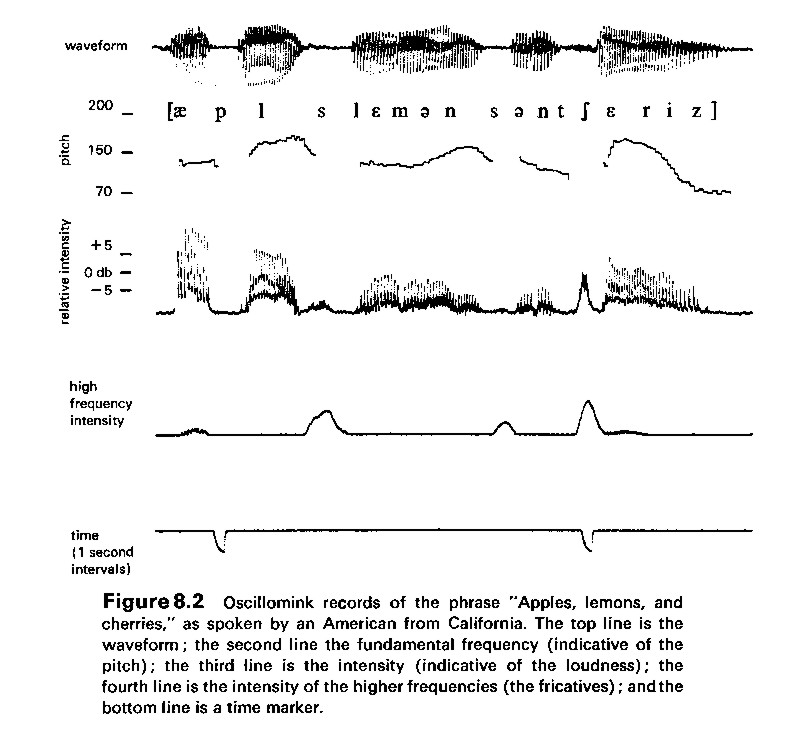Phonetics and phonology
Detailed oscillogramm (Ladefoged 1975:161)

Mapping acoustic input onto sense
| level | operations/processes |
| Acoustics | acoustic percept is analyzed to produce a phonetic representation |
| Phonology | phonological rules analyze the phonetic representation to produce a phonological representation |
| Morphology | phonological representation is analyzed morphologically to produce a morpho-phonological representation |
| Symbolization | morpho-phonological representation is matched with a schematic semantic representation |
| Semantics | meaningful elements with their structural relations build a complex meaning |
| Pragmatics | understood meaning is integrated with other knowledge to reconstruct speaker's idea |
Understanding
The hearer undertakes forward construction of the growing idea just like the speaker.
Feedback from perception to production
motor theory of speech perception
Spreading activation may be involved in the activity of the mirror-neuron system.